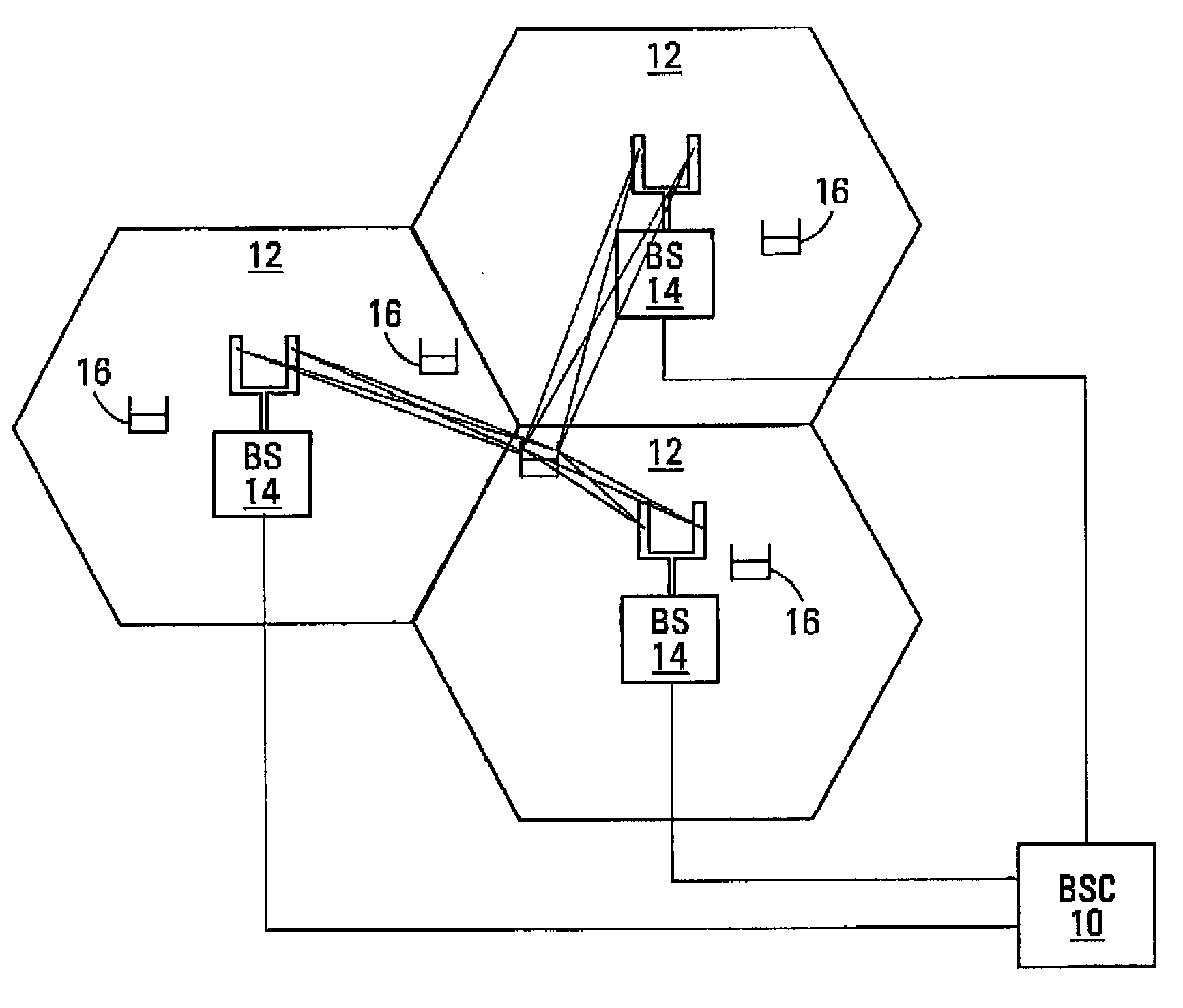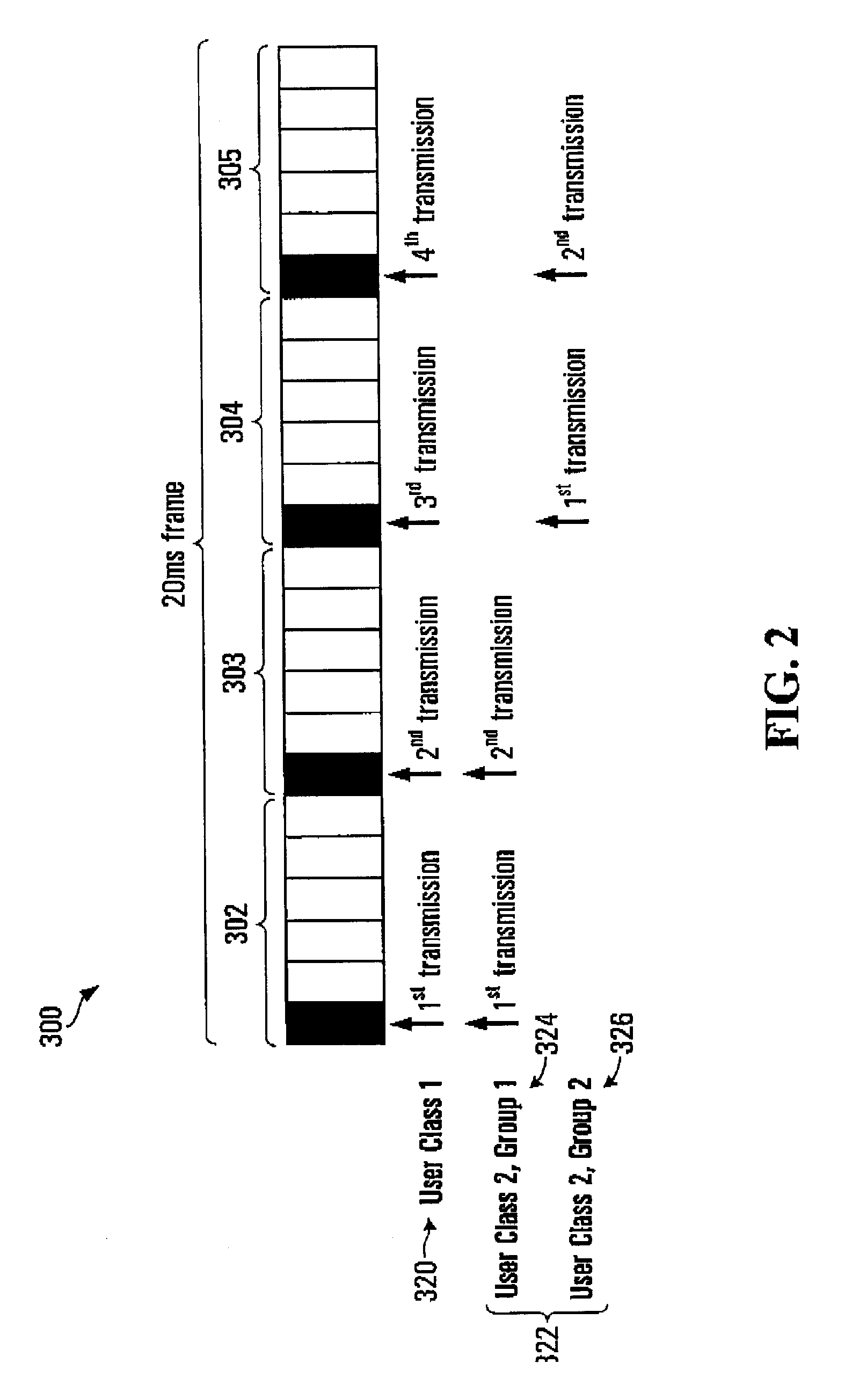Multiplexing schemes for ofdma
a multi-schema and multi-schema technology, applied in the field of multi-schema, can solve the problems of large signalling overhead, significant scheduling complexity and signalling overhead, and achieve the effect of improving reliability
- Summary
- Abstract
- Description
- Claims
- Application Information
AI Technical Summary
Benefits of technology
Problems solved by technology
Method used
Image
Examples
first example
[0381]In some embodiments, a first subset of users are fully persistent, and a second subset, possibly all remaining users, have a only their first allocation a persistent first allocation.
[0382]In an example of full persistent allocation using a combined bitmap, the users with full persistent allocation for all HARQ transmissions are designated as a special user group in the bitmap. The users' positions in bitmap could be all at the beginning, or distributed throughout the bitmap in some known way. In some embodiments, a separate bitmap is employed. The locations in the bitmap are known for all other users to see. In some embodiments, the number of the first subset is fixed, and in known locations, so that all users can tell which bits in the bitmap relate to full persistent resource allocations.
[0383]In some embodiments, the full persistent allocation users are further segmented into groups that have different HARQ sub-packet start points, as described for other embodiments above....
second example
[0388]In a second example of the use of a combined bitmap for full persistent users and persistent first transmission users, a cyclic shift within full persistent resources is employed.
[0389]More generally, for any of the embodiments described herein, a cyclic shift can be performed for any resource allocation, meaning that the location of a resource associated with particular signalling will move cyclically through the available resource. More generally still, for any of the embodiments described herein, an arbitrary shift of the resource allocation can occur, so long as the shift is known to both the transmitter and receiver.
[0390]In an example of full persistent allocation using a combined bitmap, the users with full persistent allocation for all HARQ transmissions are designated as a special user group in the bitmap. The users' positions in the bitmap could be all at the beginning, or distributed throughout the bitmap in some way. In some embodiments, a separate bitmap is employ...
PUM
 Login to View More
Login to View More Abstract
Description
Claims
Application Information
 Login to View More
Login to View More - R&D
- Intellectual Property
- Life Sciences
- Materials
- Tech Scout
- Unparalleled Data Quality
- Higher Quality Content
- 60% Fewer Hallucinations
Browse by: Latest US Patents, China's latest patents, Technical Efficacy Thesaurus, Application Domain, Technology Topic, Popular Technical Reports.
© 2025 PatSnap. All rights reserved.Legal|Privacy policy|Modern Slavery Act Transparency Statement|Sitemap|About US| Contact US: help@patsnap.com



